Retainers & Oral Appliances Cumming
More Than Just Braces
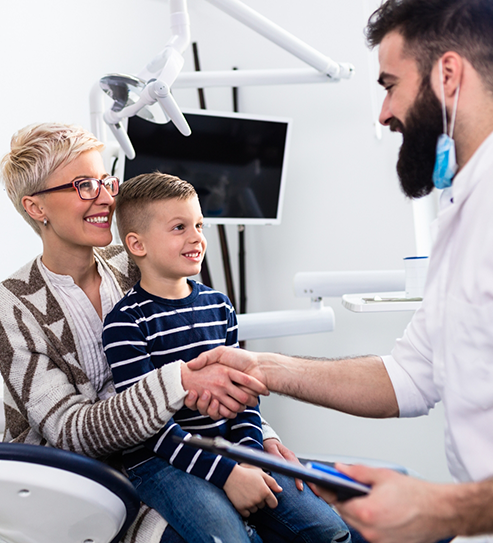
When you hear the word “orthodontics,” what comes to mind? Probably the image of a child with metal braces, right? Thankfully, not only are Dr. Podray-Donovan, Dr. Grochowska, and Dr. Lewis able to help adults as well as teens and young children, but they can also offer many, many other treatments beyond braces. Appliances like retainers, expanders, and functional appliances enable them to move the teeth in unique ways as well as ensure that a patient’s results last for a lifetime. You can learn more about some of the appliances we use every day to help our patients below, and to see which ones might be right for you or your child, be sure to call us today to schedule a FREE consultation to discuss retainers and oral appliances in Cumming, GA.
Why Choose Serenity Orthodontics for Retainers & Oral Appliances?
- All Appliances Specially Designed for Each Patient
- Stop Thumb-Sucking for Good with a Thumb Crib
- Orthodontists with Years of Experience & Special Training
Removable Retainers
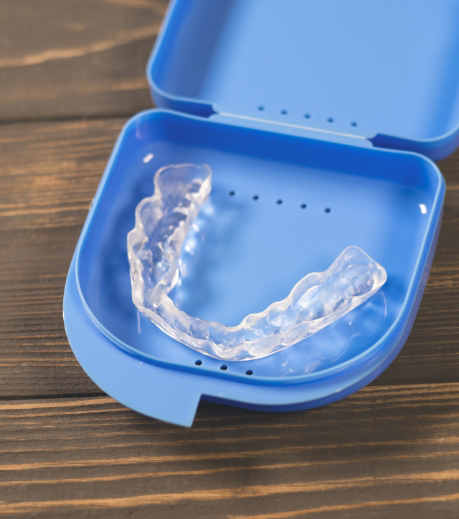
After the teeth have been straightened using braces or a clear aligner treatment, a patient will be asked to wear a retainer. This is because, without it, the teeth will start to shift back to their original positions, and no one wants that! Removable retainers are made from plastic and fit snugly around your teeth. At first, a patient will be asked to wear their retainer(s) as much as possible, but after a few months, it will only need to be worn to bed.
How to Use a Removable Retainer
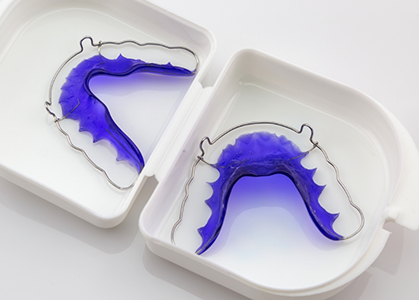
Removable retainers fit over your teeth and help keep them from shifting back into their original position. Made up of clear, transparent plastic, a metal wire surrounds the plastic and fits snugly over your teeth. The material is custom-made based on impressions taken of your teeth.
In most situations, you will receive your retainer the same day you have your braces removed. This is to prevent as much teeth movement as possible.
The Pros and Cons of a Removable Retainer

What makes a removable retainer so great is that it not only allows you to brush and floss like normal but it can be customized to better align with your personality! Oftentimes, children and teens will opt for a bright or sparkling color instead of a clear plastic. Adults, however, may choose to keep with the more discreet look to avoid the potential of anyone noticing the retainer.
Although there are several positive factors to having a removable retainer, there are also a few cons, some of which include:
- They are easily disposed of, so if you’re not careful when out to eat with friends, you could accidentally throw them away if not protected in your case.
- They must be cleaned daily to avoid bacteria or calcium buildup on your retainer.
- You must be responsible enough to remember to wear it according to our instructions, which will be provided to you the day you receive your retainer.
- They need to be replaced over time. This timeframe can vary between individuals, especially if you are prone to teeth grinding, which can cause the plastic to wear down more quickly.
Day-to-Day Care for Removable Retainers
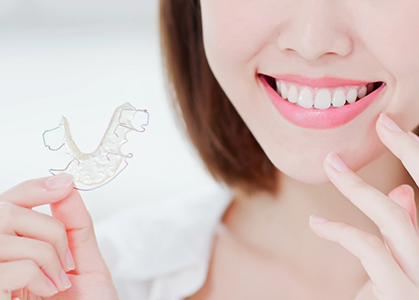
When beginning this phase of treatment, you will need to follow a few aftercare tips to ensure your retainer remains intact and in place.
- You’ll need to wear your retainer for the designated amount of time each day. Your orthodontist in Cumming will explain how long you will need to wear it to avoid any potential movement of your teeth.
- If your mouth begins to feel sore, you can take an over-the-counter pain reliever. It is possible that your speech may be slightly altered in the first few days of wear; however, this will dissipate with time. If you develop a sore area on your gum, let us know and we can adjust your retainer to fit more comfortably.
- Using soap and lukewarm water, make sure to brush your retainer daily. You can opt to purchase a retainer cleaner if you prefer. You never want to use hot water or attempt to boil the retainer to sterilize it, as this will warp the plastic and ruin the retainer.
- When your retainer is not in your mouth or soaking, keep it in a protective case. This will prevent you from accidentally throwing it away, dropping and damaging it, or bending it in any way.
Fixed Retainers

Fixed retainers are ideal for teeth that have a very high likelihood of shifting again after a patient has undergone orthodontic treatment. A small metal bar is affixed to a few teeth using some dental cement. The bar is placed on the back of the teeth so it’s virtually invisible, and it’s extremely thin as well. So, after a few days, a patient won’t even be able to feel it.
What Is a Fixed Retainer?
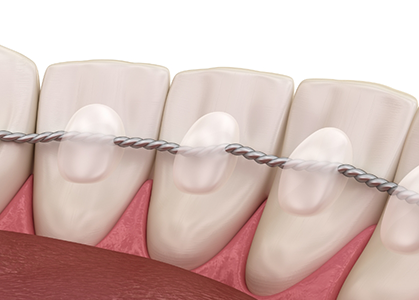
A fixed retainer is a small, metal bar that is affixed to a few teeth. Using dental cement, your orthodontist will place the appliance on the backside of your teeth, making it invisible to others. At first, you might feel it against your tongue; however, because it is thin, you will be less likely to notice it after a few days of wear.
Fixed retainers are designed for permanence, so if we think your teeth are more likely to shift after discontinuing treatment with braces, you can expect us to recommend this type of oral appliance.
How Are Fixed Retainers Different from Removable Retainers?
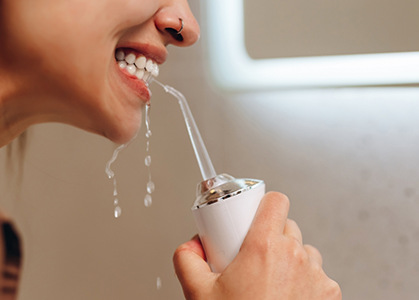
When completing treatment with metal or ceramic braces or clear aligners, you will need to wear a retainer. There are two types your dentist will choose from: a fixed or removable retainer. While there are benefits to having a removable one, there are also many great reasons to receive a fixed one instead. So, apart from the obvious that one is affixed, and the other is removable, what are their differences?
- Comfort: A fixed retainer, while felt in the first few days, is less likely to be as bothersome as a removable retainer. Over time, you won’t even notice it is there as you move throughout your day. It will become a more natural feeling that does not hinder your soft tissues in any way.
- Cleaning: While you may not have to soak your retainer or clean it separately like a removable one, there are some difficulties when it comes to keeping it clean. It is easy for food and bacteria to become trapped behind the metal bar. If left untreated, it can begin to calcify and become impossible to remove with dental floss. To keep it clean, you will likely need to invest in a floss threader or water flosser to help navigate the crevices and remove plaque accumulations.
- Permanence: With a fixed retainer, it is permanently placed inside your mouth, so you’ll never have to worry about losing it. A removable retainer requires that you take it out before eating. If you don’t have a protective case, you can easily lose or damage your retainer, which can result in a necessary and costly replacement.
- Speech: Because these metal bars are placed on the backside of your teeth, it is less likely to cause problems with your speech. Oftentimes, a removable retainer can make it difficult to say certain words and may even cause you to have a temporary lisp. Not to mention the excess saliva you will produce while wearing a removable retainer. By having a fixed one put into place, you can speak with clarity, making it less obvious you are wearing any type of appliance.
Functional Appliances

An issue like a pronounced overbite, underbite, or crossbite might not be able to be corrected with braces alone, but orthodontic functional appliances can help align the bite without a patient having to undergo invasive jaw surgery. Typically recommended for children, a device that goes over and around the head is attached to the braces before a patient goes to bed, and it applies the force needed to direct the growth of the jaw to ensure the teeth come together as they should.
What Is Orthodontic Headgear?
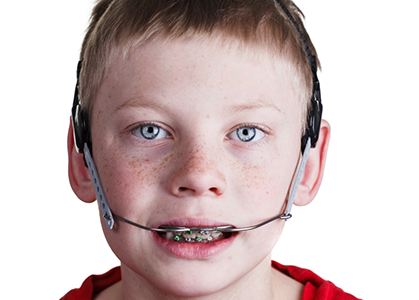
Headgear is a unique orthodontic appliance that is worn externally and fits around the head. Attached to your child’s braces, the device may be worn all day or at night while asleep. Its main purpose is to move the jaw as it grows so that your child’s teeth will move into the proper position and work together effectively.
There are different types of headgear available, so depending on the needs of your child, our orthodontists will recommend one of the following:
- Cervical Pull helps to correct a jaw and teeth that protrude outward (overbite or overjet)
- High Pull helps to address overbites and overjet as well as open bites and excessive jaw growth in the posterior of the mouth
- Reverse Pull helps to correct an underbite where the teeth protrude beyond the upper teeth
How Is Orthodontic Headgear Used?
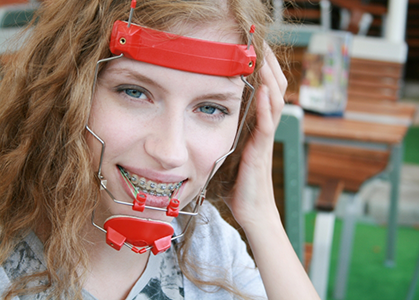
When meeting with your child’s orthodontist to discuss headgear, there will be clearly defined instructions provided so that your little one understands how to wear it, clean it, and what not to do while wearing the device.
Because headgear is designed to address tooth and jaw misalignment as well as overcrowding, your child will notice a substantial difference in their facial appearance over time. Also, if your little one’s teeth sit too close together, the device will generate the necessary space to ensure a healthier, more aesthetically pleasing smile.
It is usually only recommended while your child is still growing and developing, as this will allow for easier movement and minimize the potential need for jaw surgery as an adult.
Typically, headgear is designed to be worn for 12-14 hours each day. It’s necessary to abide by the recommended timeframe so that your child’s teeth and jaw will move accordingly. To achieve the designated time spent wearing headgear, the orthodontist may recommend they put it on immediately after school and wear it until the next morning before returning to the classroom.
The Do’s and Don’ts of Wearing Orthodontic Headgear

While your child is wearing their headgear, it is important that they follow our team’s instructions for what to do and what not to do. Missing even one day with this device can cause a delay in treatment, so if you and your child want to avoid additional time with this orthodontic appliance, they should follow these tips:
- Never eat while wearing headgear. It must be removed beforehand; however, they can drink through a straw while wearing the device.
- Ultimately, it is up to you and your child whether they want to leave their headgear on or take it off while practicing good oral habits at home (i.e., brushing, flossing, rinsing).
- Avoid gum and hard candies while wearing headgear and braces.
- Some physical limitations are necessary while wearing headgear (i.e., not engaging in contact sports). Your child will also need to stay away from outdoor activities or sports that could potentially result in a fall, damaging their teeth, braces, and orthodontic appliances.
- Have your child eat soft foods initially to reduce soreness while chewing.
- Remind your child that if they are to wear their headgear to school that it is only temporary.
Palatal Expanders
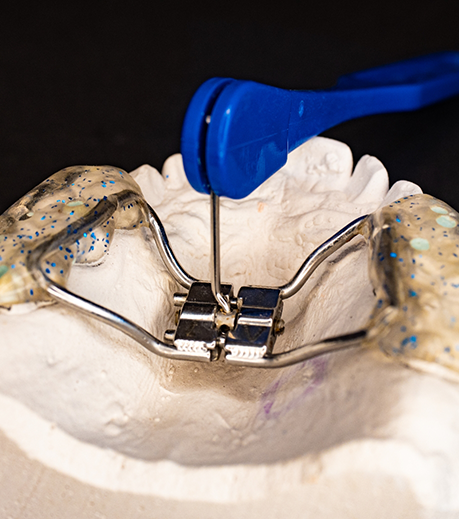
The roof of the mouth, or hard palate, can sometimes be so narrow that it prevents a child’s upper teeth from coming in straight. This can lead to crookedness and even impaction in some cases. To help correct this, we can place a small metal bar that runs along the roof of the mouth. Over time, this bar will gradually widen, creating a broader hard palate. This can help the upper teeth come in correctly and also create enough room for the teeth to shift in response to braces.
Thumb Cribs
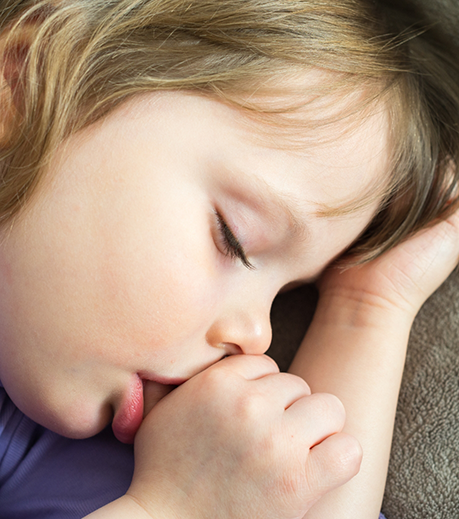
Thumb-sucking is adorable when babies do it, but if this habit continues after a child’s teeth start coming in, it can lead to serious orthodontic issues down the road, including crooked and gapped teeth and an underdeveloped jaw. If you haven’t had success getting your child to stop this habit, we can place a small appliance in their mouth that physically blocks them from sucking their thumb. In a few weeks, the child will stop naturally, and then the crib can be removed.

